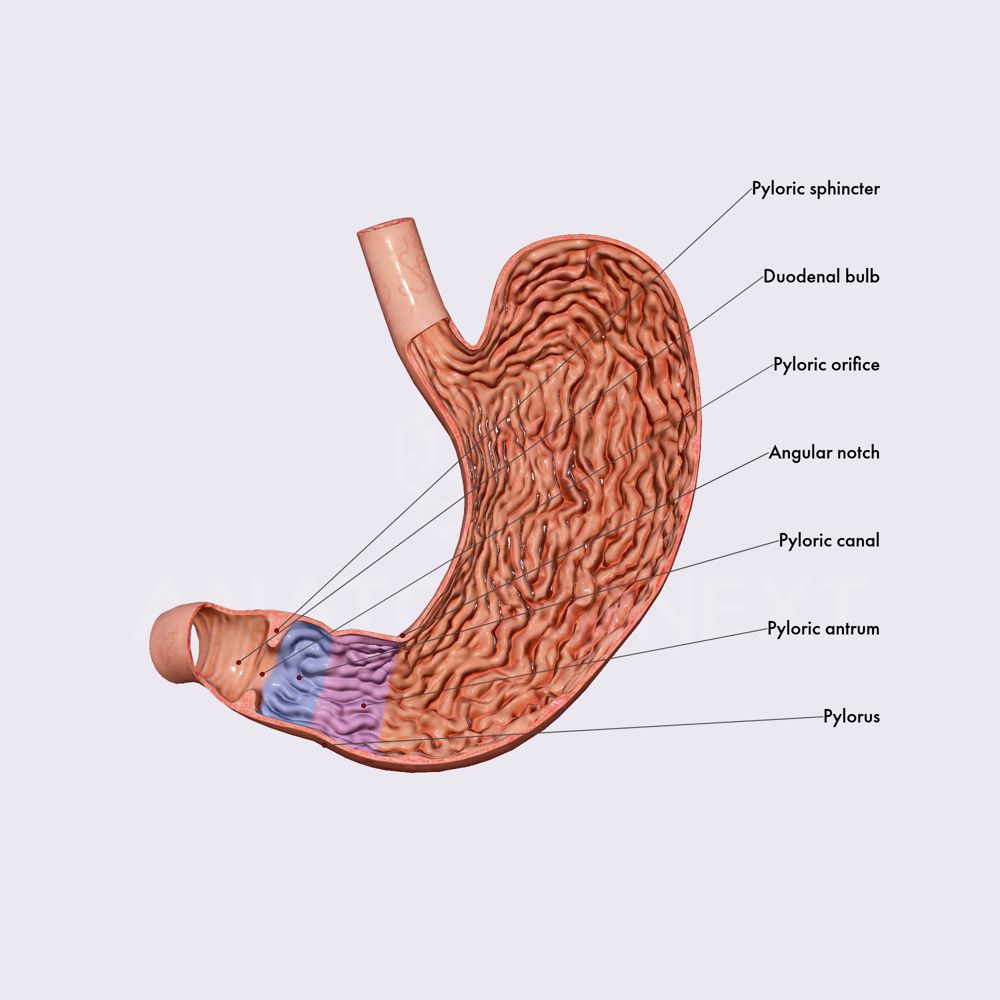✕

Unlock with Premium
Previous slide
6 / 10
Next slide

The stomach connects with the duodenum via the pylorus - the funnel-shaped final part of the stomach. It is positioned between the body of the stomach and the duodenal bulb. Therefore, the pylorus extends from the angular notch to the gastroduodenal junction.